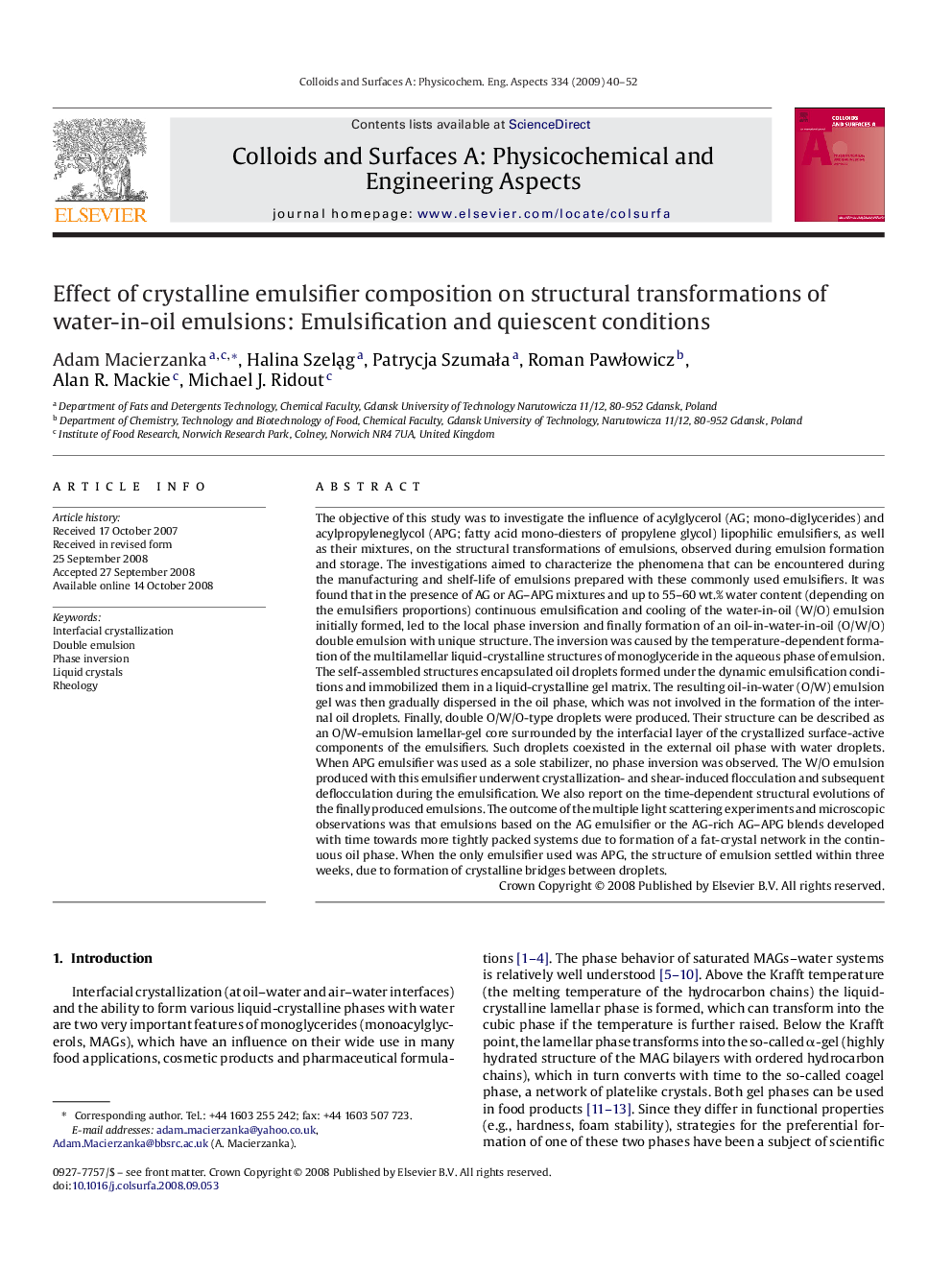| Article ID | Journal | Published Year | Pages | File Type |
|---|---|---|---|---|
| 596209 | Colloids and Surfaces A: Physicochemical and Engineering Aspects | 2009 | 13 Pages |
The objective of this study was to investigate the influence of acylglycerol (AG; mono-diglycerides) and acylpropyleneglycol (APG; fatty acid mono-diesters of propylene glycol) lipophilic emulsifiers, as well as their mixtures, on the structural transformations of emulsions, observed during emulsion formation and storage. The investigations aimed to characterize the phenomena that can be encountered during the manufacturing and shelf-life of emulsions prepared with these commonly used emulsifiers. It was found that in the presence of AG or AG–APG mixtures and up to 55–60 wt.% water content (depending on the emulsifiers proportions) continuous emulsification and cooling of the water-in-oil (W/O) emulsion initially formed, led to the local phase inversion and finally formation of an oil-in-water-in-oil (O/W/O) double emulsion with unique structure. The inversion was caused by the temperature-dependent formation of the multilamellar liquid-crystalline structures of monoglyceride in the aqueous phase of emulsion. The self-assembled structures encapsulated oil droplets formed under the dynamic emulsification conditions and immobilized them in a liquid-crystalline gel matrix. The resulting oil-in-water (O/W) emulsion gel was then gradually dispersed in the oil phase, which was not involved in the formation of the internal oil droplets. Finally, double O/W/O-type droplets were produced. Their structure can be described as an O/W-emulsion lamellar-gel core surrounded by the interfacial layer of the crystallized surface-active components of the emulsifiers. Such droplets coexisted in the external oil phase with water droplets. When APG emulsifier was used as a sole stabilizer, no phase inversion was observed. The W/O emulsion produced with this emulsifier underwent crystallization- and shear-induced flocculation and subsequent deflocculation during the emulsification. We also report on the time-dependent structural evolutions of the finally produced emulsions. The outcome of the multiple light scattering experiments and microscopic observations was that emulsions based on the AG emulsifier or the AG-rich AG–APG blends developed with time towards more tightly packed systems due to formation of a fat-crystal network in the continuous oil phase. When the only emulsifier used was APG, the structure of emulsion settled within three weeks, due to formation of crystalline bridges between droplets.
